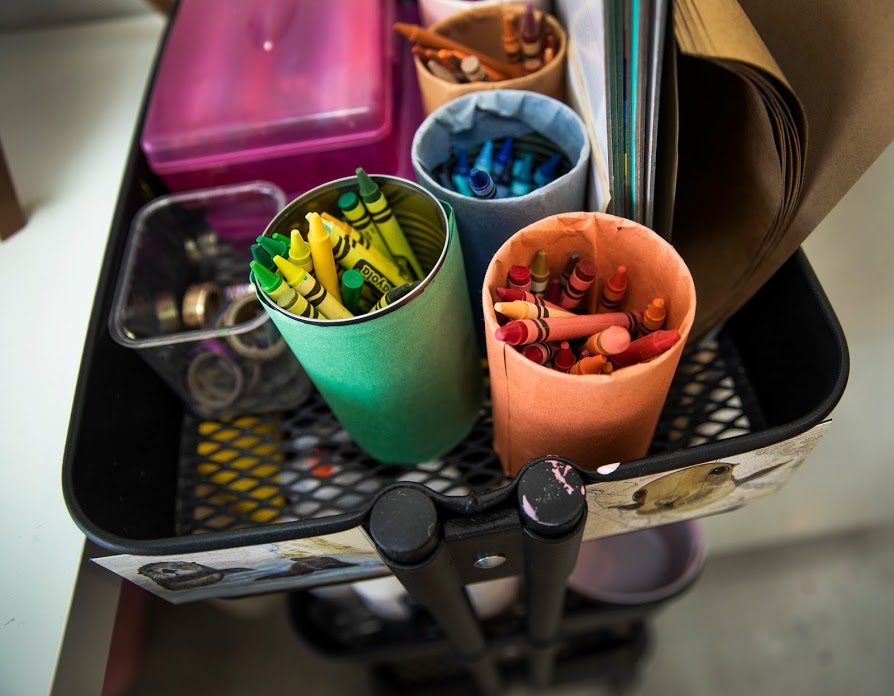Homeschool rate leaps in Nevada during the pandemic

The pandemic drove a more than 10 percent increase in the number of Nevada households homeschooling their children, which was one of the largest leaps nationwide, according to data recently released by the U.S. Census Bureau.
The data comes from the Household Pulse Survey, which queried families about how the coronavirus was affecting everything from education and employment to food security and housing. The survey specifically looked at two periods— April 23 - May 5 and Sept. 30 - Oct. 12 — to glean changes in education patterns.
Nationally, the rate of U.S. households homeschooling children jumped from 5.4 percent in the spring to 11.1 percent in the fall. The increase was even sharper in Nevada, where 2.5 percent of households with children reported homeschooling in the spring compared with 13.1 percent in the fall.
The surge didn’t surprise Elissa Wahl, chair of the Nevada Homeschool Network and president of the Rise Education Resource Center, which provides facility space and support for families doing nontraditional education. Wahl attributes the heightened interest in homeschooling to many school districts’ decisions to stay full virtual or operate in a hybrid model this year.
The Clark County School District, which educates the lion’s share of Nevada students, didn’t start some in-person learning until earlier this month.
“I’m on mom Facebook groups and the frustration with the hours and hours of time online was so evident in everyone,” she said.
The Census Bureau numbers simply add more evidence to what many have suspected all along this past year. Most school districts in Nevada saw enrollment drops to some degree, and while students may have moved or switched to a charter or private school, other families likely decided to try a form of homeschooling. A new buzzword emerged in the education realm — microschools — as families looked for different options. Microschools or “pods” come in many shapes and forms, but, in general, they have fewer than 150 students who work alongside each other despite age differences.
The city of North Las Vegas even entered the education arena by partnering with Nevada Action for School Options to launch the Southern Nevada Urban Micro Academy (SNUMA) in August. Parents of the roughly 100 students enrolled in SNUMA were required to declare them homeschooled.
Kenneth Retzl, director of education policy for the Guinn Center, said the big question is whether this trend fizzles out or continues next year.
“What happens when people start feeling a little bit more comfortable?” he said. “Schools are starting to reopen now. Will those families still choose the homeschool option? Or will they bring their kids back to CCSD?”
Wahl doesn’t foresee a hurried slide back to traditional public schools, though. As the benefits of homeschooling spread via word of mouth — more freedom to personalize instruction and schedules — Wahl said she expects the numbers to continue an upward trajectory in Nevada.
She used to hold quarterly homeschool workshops, covering topics such as homeschool laws, resources, record-keeping and creative teaching. Now, she’s doing them monthly based on demand.
Wahl, who has homeschooled her sons, tries to emphasize that parents don’t need to model their homeschool environment off traditional school settings — nor do they need to buy certain online curriculums to use. It’s about parent agency, she said, and catering to your child’s unique needs. Wahl said her oldest son was very into computers, theater and wildlife management, so she weaved those topics into his studies.
“We really had to combat that,” Wahl said, referring to parents’ inclination to buy software or try to mimic traditional classroom experiences. “These are not your only options. It doesn’t have to look like online learning, but I’m not sure we were able to get that message through to everyone.”
Students’ shift to homeschooling environments, however, will invariably have an effect on school funding given the loss of those per-pupil dollars, Retzl said. But it’s too soon to say how large the dent in funding may be. If it’s just a few students at each school, there may be no noticeable difference, he said.
Other states with double-digit percentage increases in households doing homeschooling include Alaska, Florida, Massachusetts, Mississippi, Montana, Oklahoma, Vermont and West Virginia.
The Census Bureau also found that homeschooling increased more significantly among families who identified as Black or African American than it did for other racial groups. The portion of Black or African American families who said they were homeschooling children increased from 3.3 percent in the spring to 16.1 percent in the fall.
The report’s authors cited a number of factors that could be contributing to increases in homeschooling, including “local homeschooling variation that predated the pandemic, local rates of coronavirus infections, and local decisions about how school is being conducted during the pandemic.”
“More people than ever know they have options,” Wahl said.
